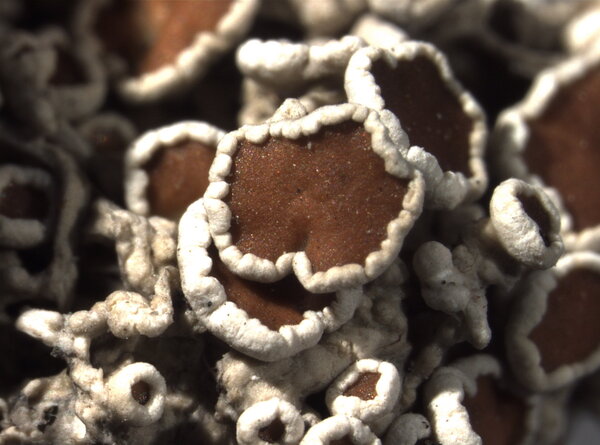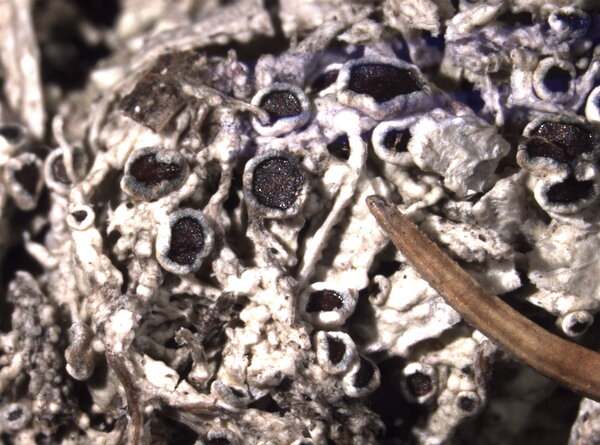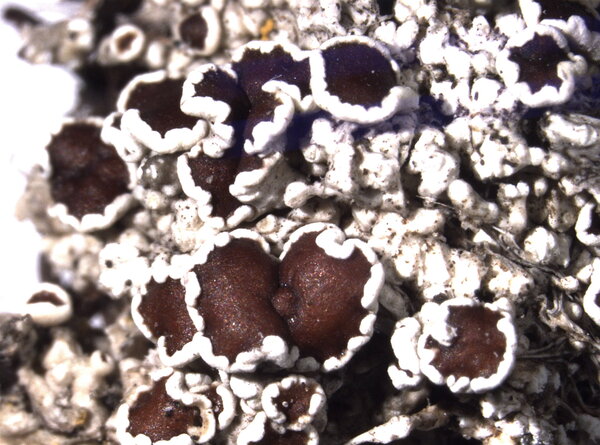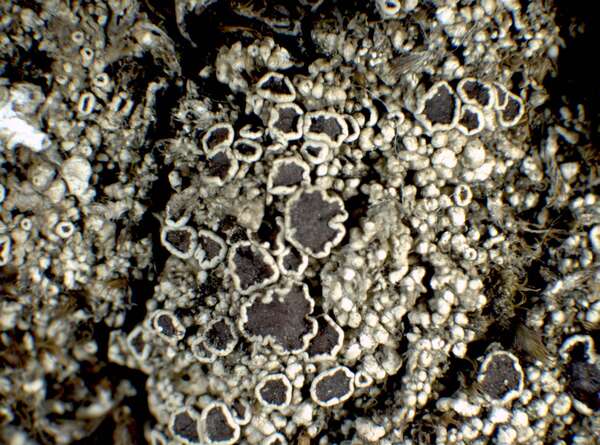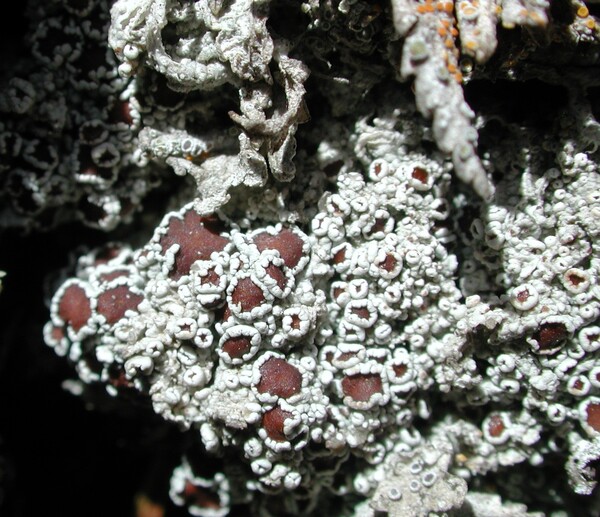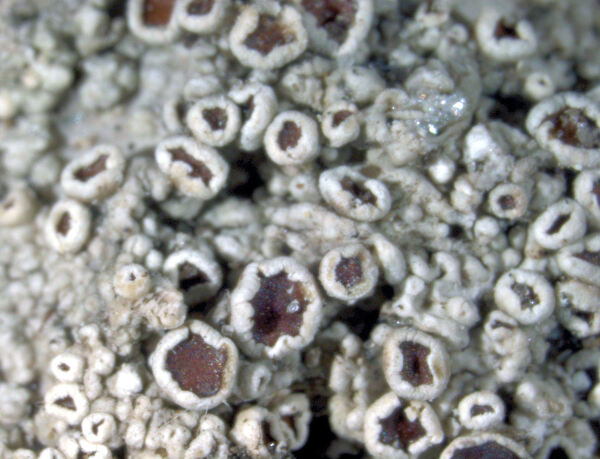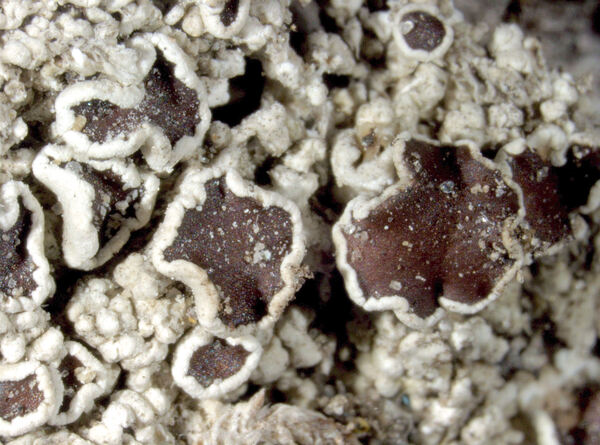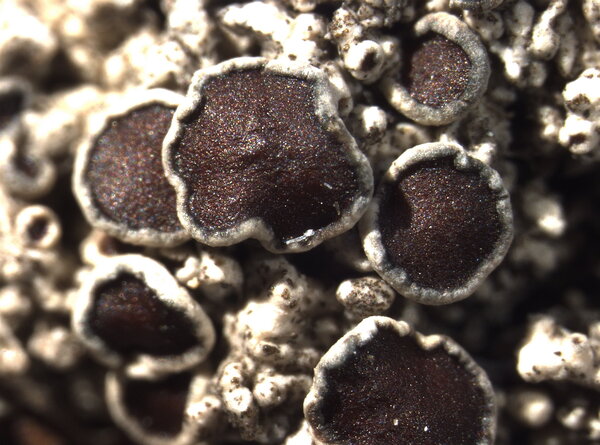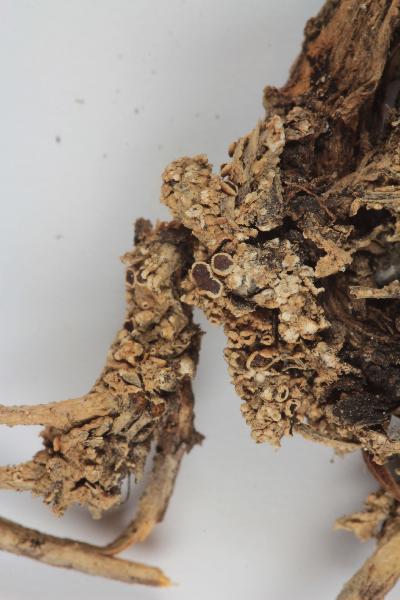Lecanora epibryon (Ach.) Ach. var. epibryon
Lichenogr. Univ.: 396, 1810. Basionym: Lichen epibryon Ach. - Lichenogr. Suec. Prodr.: 79, 1799.
Synonyms: Lecanora subfusca var. hypnorum Rabenh.
Distribution: N - Frl, Ven (Nimis 1994, Caniglia & al. 1999, Nascimbene & Caniglia 2003c, Thor & Nascimbene 2007, Nascimbene 2008c), TAA (Caniglia & al. 2002, Nascimbene 2008, Hafellner 2015, Ertz & al. 2015, Nascimbene & al. 2022), Lomb (Dalle Vedove & al. 2004, Ertz & al. 2015), Piem (Isocrono & al. 2004, Morisi 2005), VA (Valcuvia 2000), Emil, Lig. C - Umb (Genovesi & al. 2001, Ravera & al. 2006), Abr (Nimis & Tretiach 1999, Di Nuzzo & al. 2021, Gheza & al. 2021, Vallese & al. 2022), Mol (Ravera & Genovesi 2012, Genovesi & Ravera 2014).
Description: Thallus crustose, episubstratic, whitish to pale grey, continuous to warted. Apothecia lecanorine, more or less round or irregular in outline, sessile, strongly constricted to almost substipitate, 0.5-2(-3) mm across, with a reddish brown, often somewhat shiny, epruinose, mostly flat disc and a thick, smooth to crenulate-undulate thalline margin. Thalline exciple to 100 µm thick, containing small, irregular crystals visible under polarized light and not dissolving in K; epithecium red-brown, without crystals, sometimes with small oil droplets; hymenium colourless, 60-90 µm high; paraphyses simple or sparingly branched in upper part, 1.5-2 µm thick at mid-level, the apical cells slightly thickened, to 3.5 µm wide; hypothecium colourless. Asci 8-spored, clavate, very thin-walled, with a K/I+ blue, tall tholus penetrated by a faintly amyloid apical cushion, the wall K/I-, surrounded by a blue outer layer, Lecanora-type. Ascospores 1-celled, hyaline, ellipsoid or narrowly ellipsoid, (11-)12-17(-19) x (6-)7-8(-10) µm. Photobiont chlorococcoid. Spot tests: thallus K+ yellow, C-, KC-, P- or P+ slowly and faintly yellow, UV-. Chemistry: atranorin and variable amounts of zeorin.Note: a circumpolar, arctic-alpine species found on mosses and plant debris in open calcareous grasslands and alpine tundras, often on ridges in Carex firma stands; common in the Alps near and above treeline, rarer in the Apennines.
Growth form: Crustose
Substrata: soil, terricolous mosses, and plant debris
Photobiont: green algae other than Trentepohlia
Reproductive strategy: mainly sexual
Commonnes-rarity: (info)
Alpine belt: rather common
Subalpine belt: common
Oromediterranean belt: absent
Montane belt: absent
Submediterranean belt: absent
Padanian area: absent
Humid submediterranean belt: absent
Humid mediterranean belt: absent
Dry mediterranean belt: absent
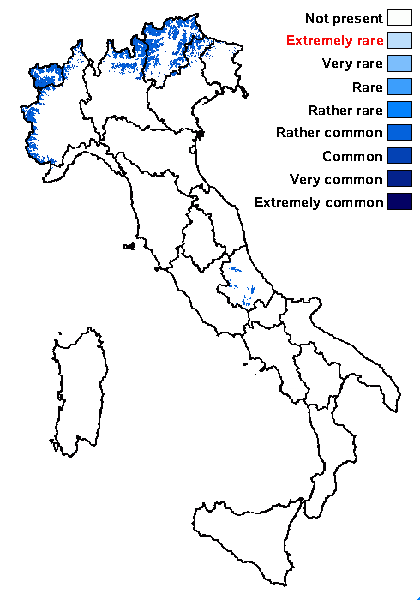
Predictive model
Herbarium samples
Growth form: Crustose
Substrata: soil, terricolous mosses, and plant debris
Photobiont: green algae other than Trentepohlia
Reproductive strategy: mainly sexual
Commonnes-rarity: (info)
Alpine belt: rather common
Subalpine belt: common
Oromediterranean belt: absent
Montane belt: absent
Submediterranean belt: absent
Padanian area: absent
Humid submediterranean belt: absent
Humid mediterranean belt: absent
Dry mediterranean belt: absent

Predictive model
| Herbarium samples |
 INDEX FUNGORUM
INDEX FUNGORUM
 GBIF
GBIF
 DOLICHENS
DOLICHENS
